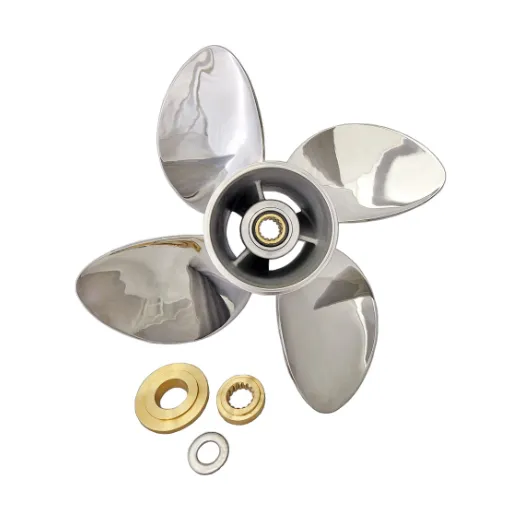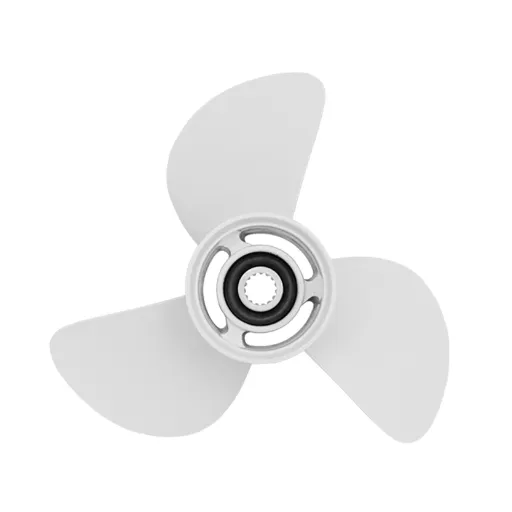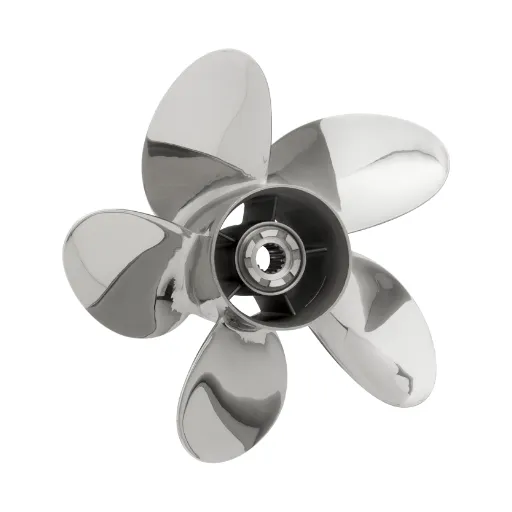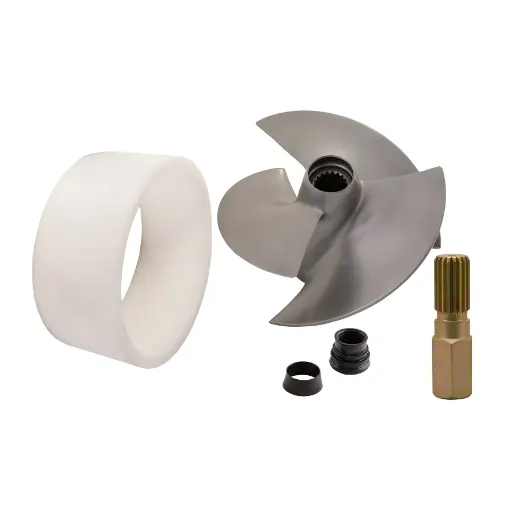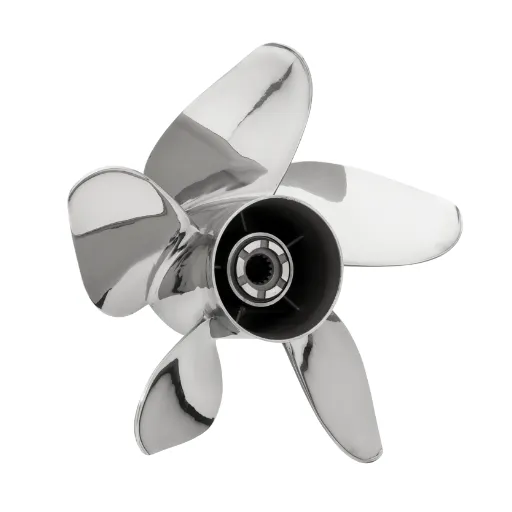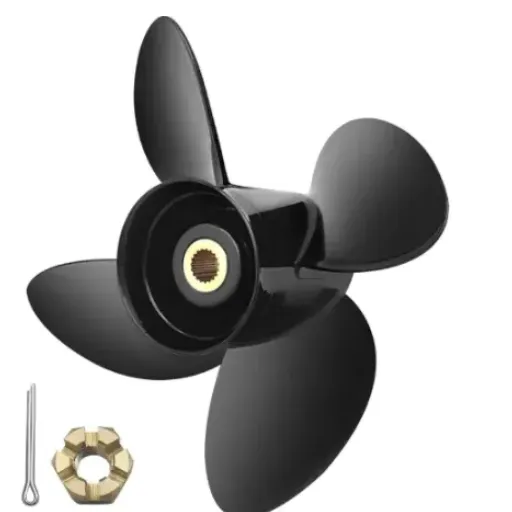A top-line propeller can really maximize the performance of your 200 Yamaha outboard motor. Whether you are into fishing, watersports, or simply cruising the scenic waters, a perfect-time propeller can be able to add more speed, save fuel, and improve handling for that boat of yours. But with a great number of options available, choosing one can be quite daunting. That is where this guide comes in. This detailed guide covers everything on propellers for Yamaha outboard motors, so you can make an excellent decision and extract maximum enjoyment from your boating adventures. Stay tuned to gain a plethora of insight, tips, and advice from experts who will fill in that missing link to your brilliant on-water experience!
Understanding Yamaha Outboard Motors
Overview of Yamaha Outboard Technology
Renowned for great technology, reliability, and performance, Yamaha outboard engines epitomize advanced engineering to provide power to perform while maximizing fuel efficiency and lowering emissions. Yamaha outboard motors are designed to suit all kinds of powerboats, whether for recreation, fishing, or commercial operation.
Leading the pack is Yamaha’s unique 4-stroke technology that prioritizes cleanliness and less noise over conventional 2-stroke engines. It saves fuel and reduces maintenance costs while assuring that the ride is smooth and responsive. Many models of Yamaha are integrated with corrosion-resistant materials to provide lasting service life even in saltwater.
Moreover, the outboards also present features that appeal to the user, such as Variable Trolling RPM, which gives fine low-speed control for fishing or delicate maneuvering. The company’s pursuit of technological advancement can also be witnessed through the Digital Electronic Control (DEC) system and integrated boat control system called Helm Master EX. These advancements provide better control and stability and ease of navigation for the end-user, making Yamaha outboards favored by boating enthusiasts across the world.
Key Features of Yamaha Outboard Motors
Yamaha motors are recognized for their dependability, performance, and advanced technologies that put them in a class of their own in the marine industry. Fuel efficiency is one such attribute; by requiring fewer refueling stops, this offers the boater the luxury of travelling farther, thus saving valuable time and money. Yamaha motors deliver power smoothly and consistently, depending on performance under all water conditions.
Among the other advantages are Digital Electronic Control (DEC) systems offered on Yamaha outboard motors. This system has made it possible to achieve exact throttle and shift positions, greatly benefiting the overall boating experience. Thus, the Helm Master EX system provides integrated boat control, including joystick steering that makes docking and navigating in tight spaces incredibly simple.
Durability and low maintenance are among the key qualities of Yamaha outboards. Made with good materials and cutting-edge engineering, these motors are meant to resist saltwater and harsh marine surroundings. The owner gets a product that is known to be a reliable product that requires little maintenance, thereby ensuring that whatever investment was made remains performing at its best throughout the years. Thus, the Yamaha outboards tie efficiency with technology and reliability to remain at the top in the eyes of casual boaters and professionals alike.
Benefits of Choosing Yamaha for Your Boat
- Reliability: For the durability and the consistency of performance from any marine conditions, Yamaha enjoys a reputation. With their advanced engineering and time-proven technologies, users are reassured about the safety of their boats even on extended voyages.
- Economy of Fuel: To ensure maximum fuel efficiency, Yamaha employs modern technology like fuel injection. This in turn lowers the running costs and diminishes the environmental polluting effect of the engine.
- Easy Maintenance: Yamaha motors are engineered with easy maintenance in mind. They need fewer maintenance requirements compared to other motor brands. Easy access to maintenance points and self-flushing systems are just a few features that allow very simple everyday care-warm to extend the life of the motor.
- Bigger Choices: Yamaha provides a wide variety of outboards for different requirements, from mini motors for smaller boats to heavy-duty motors for larger vessels. This variety guarantees that there will be a Yamaha outboard suitable for every kind of boating.
- Cutting-Edge Technology: Yamaha is at the forefront of integrating the latest tech, such as digital controls, variable camshaft timing, and noise reduction systems, to boost performance, usability, and the general experience of boating.
Choosing the Right Yamaha Propeller
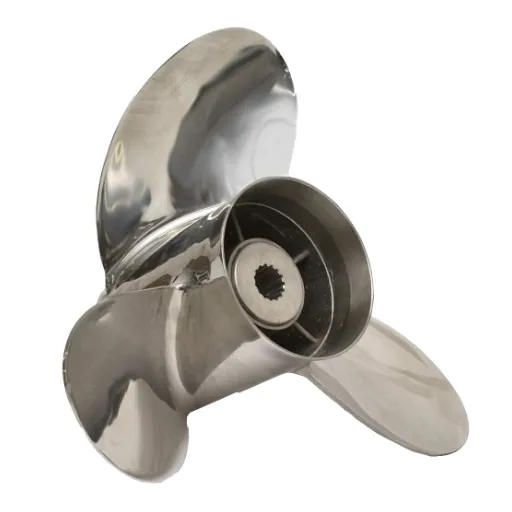
Factors to Consider When Selecting a Prop
Carrying the right propeller on your Yamaha outboard motor will guarantee better performance, efficiency, and overall handling of the boat. The mattered factors regarding make your choice are:
Boat Type and Usage
Consider whether your boat will be used for a particular purpose. A fishing boat demands different performance characteristics than that of a speedboat or a pontoon boat. The corresponding prop should also be fixed for the particular work it is intended to perform to give the best results.
Pitch and Diameter
The pitch of a propeller is the distance it propels the boat in one complete revolution through the water. Diameter is the width of the circle traced by the tips of the propeller blades in rotation. Typically low pitch props are used for heavier loads and slower speed, and high pitch to enhance top-end speed. For your specific application, it is recommended to follow the manufacturer of the outboard’s recommendations as to what pitch and diameter combination are to be selected for your outboard and boat.
Material
Motors are commonly made of aluminum or stainless steel. Aluminum propellers are inexpensive and suitable for most recreational uses, while stainless steel propellers are highly durable with better performance capabilities for challenging conditions or higher horsepower engines.
Blade Configuration
Blade configuration means the number of blades and the shape of those blades, which will affect prop performance. A three-blade propeller gives a good balance of speed and efficiency. In contrast, a four or five-blade prop gives slower acceleration but more thrust, making it suitable for water sports or heavy loads.
Engine RPM
One pump applies in making sure the prop allows for engine speed to stay in the optimal rpm range. Being too high or too low RPM results in decreased gas mileage, performance limitation, and eventually of its life outboard engines.
⚠️ Important Note: Choosing the wrong prop can lead to cavitation (air bubbles forming around the propeller) or ventilation (air being pulled down from the surface), either one of which will degrade performance. A prop fabricated, designed, and produced for your application will minimize these occurrences.
Taking these factors into account along with the Yamaha owner’s manual or the advice of a qualified dealer will definitely help pick out the perfect prop to polish your boating adventures. Correct propeller choice means better fuel efficiency, and of course, a smoother, more enjoyable ride into the sunset.
Types of Yamaha Propellers Available
Yamaha offers several types covering almost all propellers for the diverse requirements of boat users; recreational activities, fishing, or high-performance applications. Here are some types of Yamaha propellers and their feature descriptions:
| Propeller Series | Key Features | Best For |
|---|---|---|
| Reliance Series | Aluminum construction, economical, reliable performance for everyday use | Recreational boating, budget-conscious buyers |
| Performance Series | Stainless steel construction, enhanced durability, superior performance | High-performance applications, demanding conditions |
| Saltwater Series | Corrosion-resistant materials, designed for marine environments | Saltwater fishing, coastal cruising |
| High-Thrust Series | Increased blade surface area, excellent low-end torque | Heavy loads, pontoon boats, water sports |
Matching Propellers to Your Boat’s Needs
Matching the right propeller to your boat is essential for achieving optimal performance and efficiency. Several factors come into play when making this decision, including the size and weight of your boat, its intended use, and the type of water conditions you typically encounter. For instance, lighter boats with smaller engines may benefit from lower pitch propellers that provide quick acceleration, while heavier boats or those with higher horsepower engines might require higher pitch propellers to reach their full speed potential.
The hull design of your boat also significantly affects propeller selection. Deep-V hulls, which are designed for rough water, may require different propeller characteristics compared to flat-bottom boats, which are better suited for calm, shallow waters. Additionally, the way you use your boat matters—fishing boats that require precise slow-speed control will have different needs than high-speed racing boats or pontoons designed for leisurely cruising.
Another critical aspect is ensuring that your engine operates within the manufacturer’s recommended RPM range at wide-open throttle. If the RPM is too high, you might need a propeller with a higher pitch. Conversely, if the RPM is too low, a lower pitch propeller could help. Testing different propellers and consulting with Yamaha-certified dealers or marine professionals can provide valuable insights. They can help you navigate the various options available and ensure that your propeller choice aligns perfectly with your boat’s needs, delivering the best possible performance, fuel efficiency, and handling on the water.
Popular Yamaha Propellers for 200HP Motors
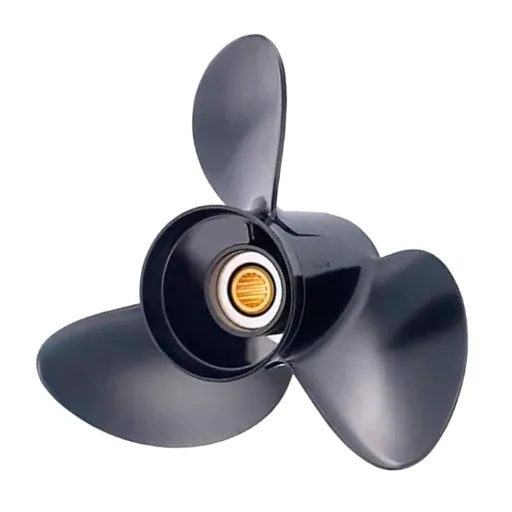
Talon Series: Features and Benefits
The Talon Series from Yamaha is engineered to deliver exceptional performance, durability, and reliability for a wide range of boating applications. Designed with a focus on efficiency, the Talon propellers are made from high-quality stainless steel, which provides superior strength and resistance to corrosion, especially in demanding saltwater environments. This construction ensures that the propellers maintain their integrity and performance over extended periods, even under harsh marine conditions.
One of the standout features of the Talon Series is its ability to improve overall boat handling and acceleration. The advanced blade design reduces drag and increases thrust, allowing boats to reach planing speeds more quickly while maintaining excellent fuel efficiency. This makes the Talon Series an ideal choice for boaters who prioritize both performance and cost-effectiveness. Additionally, the propellers’ smooth operation minimizes vibrations, resulting in a quieter and more comfortable ride.
Key Benefits of Talon Series:
- Enhanced durability with stainless steel construction
- Improved fuel efficiency and reduced operational costs
- Superior acceleration and handling in various water conditions
- Corrosion resistance for long-lasting performance
- Reduced vibrations for a smoother, quieter ride
Saltwater Series II: Ideal for Marine Environments
The Saltwater Series II propellers from Yamaha are specifically engineered to withstand the harsh conditions of marine environments. These propellers are crafted from premium materials that offer exceptional resistance to corrosion, making them the perfect choice for boaters who frequently navigate saltwater. The robust construction ensures that the propellers remain in excellent condition, even after prolonged exposure to saltwater, reducing the need for frequent replacements and maintenance.
Beyond durability, the Saltwater Series II propellers deliver impressive performance characteristics. They are designed to provide strong mid-range power and excellent top-end speed, making them versatile enough to handle a variety of boating activities, from fishing to cruising. The advanced blade geometry enhances water flow and reduces cavitation, resulting in smoother operation and improved fuel economy. Additionally, these propellers are available in multiple pitch options, allowing boaters to fine-tune their setup for optimal performance based on their specific needs and boat configuration.
Performance Propellers: Enhancing Speed and Efficiency
Yamaha’s Performance Propellers are engineered to push the boundaries of speed and efficiency, catering to boaters who demand the highest levels of performance from their vessels. These propellers are crafted from lightweight yet incredibly strong stainless steel, which allows for faster acceleration and higher top speeds without compromising on durability. The precision-engineered blade design minimizes drag and maximizes thrust, enabling boats to achieve their full speed potential while maintaining excellent fuel efficiency.
The Performance Propellers are ideal for high-performance boats, racing applications, and any scenario where speed and responsiveness are paramount. They feature a refined blade geometry that reduces turbulence and improves water flow, resulting in smoother operation and reduced cavitation. This not only enhances the overall boating experience but also contributes to lower fuel consumption over time. Additionally, the propellers are designed to operate efficiently across a wide range of RPMs, ensuring that your Yamaha outboard performs optimally in various conditions. Whether you’re competing in a race or simply enjoy the thrill of high-speed boating, the Performance Propellers deliver the reliability and performance you need.
Installation and Maintenance Tips
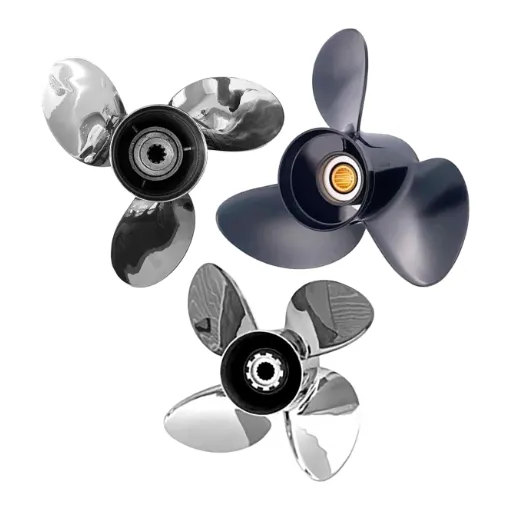
Step-by-Step Guide to Installing Your Propeller
Proper installation of your Yamaha propeller is crucial for ensuring optimal performance and safety on the water. Follow this comprehensive step-by-step guide to install your propeller correctly:
Step 1: Safety First
Ensure the engine is turned off and the ignition key is removed. Disconnect the battery to prevent accidental starting. This is a critical safety measure that protects you during the installation process.
Step 2: Remove the Old Propeller
Using the appropriate tools, remove the cotter pin or locking tab that secures the propeller nut. Carefully unscrew the propeller nut and slide the old propeller off the propeller shaft. Inspect the shaft for any damage or debris.
Step 3: Inspect and Clean
Clean the propeller shaft thoroughly, removing any dirt, rust, or marine growth. Inspect the shaft splines for wear or damage. Apply a thin layer of marine-grade grease to the shaft to prevent corrosion and facilitate future removal.
Step 4: Install the New Propeller
Slide the new propeller onto the shaft, ensuring it’s properly aligned with the splines. Install any necessary washers or thrust washers as specified in your Yamaha manual. Thread the propeller nut onto the shaft and tighten it to the manufacturer’s specified torque setting.
Step 5: Secure and Test
Install a new cotter pin or locking tab to secure the propeller nut. Bend the cotter pin ends properly to prevent it from backing out. Before launching your boat, manually rotate the propeller to ensure it spins freely without any obstructions or unusual resistance.
Step 6: Final Inspection
Double-check all connections and ensure everything is properly tightened. Reconnect the battery and perform a water test to verify that the propeller is functioning correctly. Monitor for any unusual vibrations or noises during operation.
Regular Maintenance Practices to Extend Propeller Life
Maintaining your Yamaha propeller is essential for ensuring long-term performance and reliability. Regular maintenance not only extends the life of your propeller but also helps prevent costly repairs and ensures your boat operates at peak efficiency. Here are some key maintenance practices to follow:
🔍 Regular Inspections
Inspect your propeller before and after each boating trip. Look for dents, nicks, cracks, or bent blades that could affect performance. Even minor damage can lead to vibrations and reduced efficiency.
🧼 Cleaning
After each use, especially in saltwater, rinse the propeller thoroughly with fresh water. Remove any marine growth, fishing line, or debris wrapped around the hub or blades. This prevents corrosion and maintains optimal performance.
🔧 Lubrication
Apply marine-grade grease to the propeller shaft regularly to prevent corrosion and ensure smooth installation and removal. Check and lubricate the propeller hub according to the manufacturer’s recommendations.
⚙️ Balance Check
If you notice unusual vibrations, have your propeller professionally balanced. An unbalanced propeller can cause excessive wear on bearings and seals, leading to more serious mechanical issues.
🛡️ Protection
When storing your boat, consider using a propeller cover to protect against accidental damage. Store in a dry location to minimize corrosion risk, especially during off-season periods.
📋 Professional Service
Have your propeller professionally inspected and serviced at least once per season. Professionals can identify issues that may not be visible to the untrained eye and perform necessary repairs or reconditioning.
Troubleshooting Common Propeller Issues
Even with proper maintenance, propeller issues can occasionally arise. Understanding how to identify and troubleshoot common problems will help you keep your boat running smoothly and prevent more serious damage. Here are some frequently encountered issues and their solutions:
| Issue | Symptoms | Solution |
|---|---|---|
| Excessive Vibration | Unusual shaking, rattling noises, uncomfortable ride | Check for bent or damaged blades, ensure propeller is properly tightened, have propeller balanced professionally |
| Cavitation | Loss of thrust, high RPM without speed increase, popping sounds | Inspect for damage or debris on blades, adjust engine trim, consider lower pitch propeller |
| Ventilation | Sudden RPM increase, loss of power, boat slows down | Adjust engine mounting height, modify trim angle, check for proper propeller size |
| Slow Acceleration | Sluggish hole shot, difficulty reaching planing speed | Consider lower pitch propeller, reduce boat load, check for damaged blades |
| Low Top Speed | Unable to reach expected maximum speed, engine below optimal RPM | Consider higher pitch propeller, check for fouled hull, inspect engine performance |
| Excessive RPM | Engine revving too high at wide-open throttle, reduced fuel efficiency | Install higher pitch propeller, verify propeller is correct size for engine |
Advanced Propeller Technology
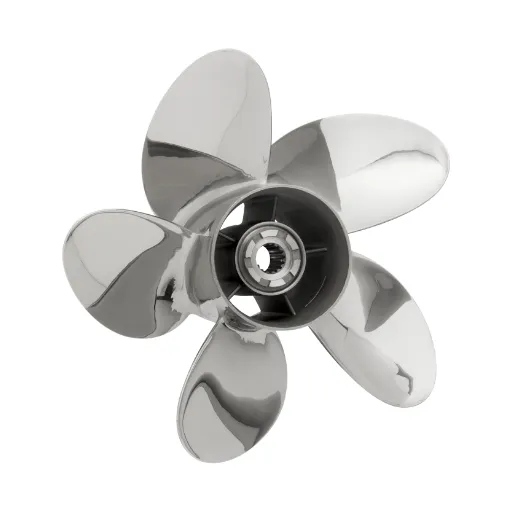
Understanding Propeller Pitch and Its Impact
Propeller pitch is one of the most critical factors affecting your boat’s performance. It refers to the theoretical distance a propeller would move forward in one complete revolution, similar to how a screw moves through wood. Measured in inches, pitch directly impacts your boat’s speed, acceleration, and engine performance. Understanding how pitch works will help you make informed decisions when selecting or changing your propeller.
Lower pitch propellers (typically 10-15 inches) move less distance per revolution, requiring less engine power to spin. This results in better acceleration, quicker hole shot, and improved performance with heavy loads or when towing water skiers. However, lower pitch propellers limit top-end speed. Conversely, higher pitch propellers (16-21+ inches) move further per revolution, requiring more power but delivering higher maximum speeds. The trade-off is reduced acceleration and potentially lower RPM, which could strain the engine if the pitch is too high for your boat’s setup.
The optimal pitch allows your engine to operate within the manufacturer’s recommended RPM range at wide-open throttle. For Yamaha 200HP outboards, this is typically between 5,000-6,000 RPM, though you should always consult your specific engine manual. If your engine exceeds this range, you need a higher pitch propeller. If it falls below, a lower pitch is needed. Each inch of pitch change typically affects RPM by approximately 150-200 revolutions. Professional testing and consultation with marine experts can help you dial in the perfect pitch for your specific boating needs, ensuring optimal performance, fuel efficiency, and engine longevity.
Material Comparison: Aluminum vs. Stainless Steel
Choosing between aluminum and stainless steel propellers is an important decision that affects performance, durability, and cost. Both materials have distinct advantages and are suited for different boating applications. Understanding these differences will help you make the best choice for your Yamaha outboard motor.
| Feature | Aluminum Propeller | Stainless Steel Propeller |
|---|---|---|
| Cost | Budget-friendly, typically 30-50% less expensive | Higher initial investment, 2-3x more expensive |
| Durability | Softer material, more prone to damage from impacts | Extremely durable, resists damage from rocks and debris |
| Performance | Good performance for recreational use, slight flex under load | Superior performance, minimal flex, better thrust and speed |
| Fuel Efficiency | Adequate efficiency for most applications | Better fuel efficiency due to improved blade design and rigidity |
| Repairability | Difficult to repair; usually requires replacement when damaged | Can often be repaired by specialists, cost-effective long-term |
| Weight | Lighter weight, less strain on lower unit | Heavier, but increased weight improves bite and reduces slip |
| Best For | Recreational boating, shallow waters, budget-conscious buyers, lower horsepower engines | High-performance applications, saltwater, commercial use, serious anglers, higher horsepower engines |
Ultimately, the choice between aluminum and stainless steel depends on your budget, boating style, and performance requirements. Aluminum propellers serve casual boaters well and provide excellent value, while stainless steel propellers are the preferred choice for those seeking maximum performance and long-term durability.
Blade Design and Its Effect on Performance
The design of propeller blades significantly influences how your boat performs on the water. Modern propellers feature sophisticated blade geometries that have been refined through years of research, testing, and technological advancement. Understanding the various aspects of blade design will help you appreciate why different propellers perform differently and which design best suits your needs.
Blade count is one of the most noticeable design features. Three-blade propellers are the most common and offer an excellent balance of speed, efficiency, and smooth operation for general-purpose boating. Four-blade propellers provide increased blade surface area, resulting in better hole shot, improved handling in turns, and enhanced performance with heavy loads or in rough water. The additional blade also reduces vibration and provides a smoother, quieter ride. Five-blade propellers take these benefits even further, offering maximum thrust and the smoothest operation, making them ideal for large, heavy boats or applications requiring exceptional low-speed control.
Blade shape and cupping also play crucial roles in performance. Cupping refers to the slight curve or “cup” at the trailing edge of the blade, which helps reduce ventilation, improve bite in choppy conditions, and can increase top-end speed by creating additional lift. Progressive blade designs feature varying pitch along the blade radius, optimizing performance across the entire RPM range. Blade rake—the angle at which the blade leans backward or forward—affects how the propeller directs thrust and influences planning speed and overall efficiency. Modern computer-aided design and testing have enabled manufacturers to create increasingly sophisticated blade profiles that maximize efficiency while minimizing cavitation and noise.
Performance Optimization
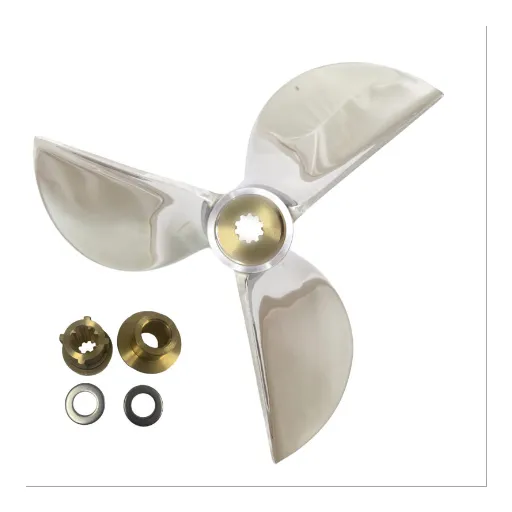
Determining the Correct Propeller Size for Your Setup
Determining the correct propeller size for your boat and engine combination is essential for achieving optimal performance, fuel efficiency, and engine longevity. The process involves considering multiple factors including your boat’s weight, hull design, typical load, intended use, and engine specifications. While this might seem complex, following a systematic approach will help you find the perfect match.
The first step is consulting your engine’s manual to identify the manufacturer’s recommended RPM range at wide-open throttle (WOT). For most Yamaha 200HP outboards, this range is typically 5,000-6,000 RPM. With your boat fully loaded as it would normally operate, take it out for a test run and monitor the engine RPM at WOT using a tachometer. If the RPM is above the recommended range, you need a propeller with higher pitch. If it’s below the range, you need lower pitch. Remember that each inch of pitch change typically affects RPM by approximately 150-200 revolutions.
Propeller size is a very important factor in making sure that engines operate efficiently and at their recommended RPM range. Manufacturers mostly give guidelines regarding propeller specifications best suited to the type of engine and hull design. Weight of the boat, purpose of use-whether fishing, cruising, or water sport-or even the water conditions such as calm lakes versus rough seas affect the choice.
It is highly useful to have online propeller sizing services or professionals to get your recomendations refined for the performance and safety optimization of anything. When correctly fitted, they would afford you with effortless handling, good fuel mileage, and little engine stress.
Optimizing Fuel Efficiency with Proper Prop Selection
Choosing a boat propeller is one of the variables that measure fuel economy. A correct propeller matching will allow the engine to operate in its recommended RPM range, thereby avoiding fuel waste due to overloading or underloading of the engine. Pitch is an extremely critical consideration in the decision. Higher pitch may be energy efficient at cruising speed, while lower pitch may be good for acceleration but usually consumes more fuel. With a careful consideration of all these factors, one can strike a compromise between performance and economical fuel consumption.
Another vital consideration is the type of material used to manufacture the propeller. Aluminum propellers, being lightweight and economical, sell well among the casual boating crowd. In contrast, although stainless steel propellers are pricier, they provide better durability and efficiency. Stainless steel propellers might flex to some degree under very fast running conditions, and the extent of such flexing affects fuel efficiency. Furthermore, new propeller concepts such as four- or five-blade designs can enhance handling and fuel efficiency by providing much better thrust and much less slippage in rough waters.
Regular propeller maintenance, along with hull maintenance, might help save fuel. Causing fouling or distortion in the propeller could work against its operation, conjuring drag and fuel. Check to ascertain no dents, nicks, or signs of wear so that the propeller might still perform to its namesake. Similar to how excessive build-up on a boat hull causes drag and requires power and fuel to keep speed, matching the right propeller to your boat with respect to contemporary designs and regular upkeep routines can go a long way in conserving fuel.
Performance Goals: What to Expect from Your Yamaha Setup
Setting performance goals for your Yamaha engine setup requires putting equal emphasis on power and precision. As per Yamaha’s engineering practices, the engines are ideally designed to produce maximum power out of whatever the design will allow at great fuel efficiency. Carry on to high speeds or amble along quiet waters, these Yamaha setups promise to a smooth operating experience with almost no vibrations or disturbing noises. The high-tech technology in these engines improves the general working of the boat and ensures reliable and consistent operation in different situations.
Enhancing fuel efficiency is the other goal that Yamaha tirelessly pursues through its cutting-edge designs. Through mechanisms such as the Variable Camshaft Timing (VCT) or implicit functionality of the Helm Master EX system, optimum throttle control is granted to the user while fuel consumption is kept to a minimum. Compared with large, bulky designs, Yamaha engines are clean and lightweight, further integrating modern four-stroke technology to reduce their environmental footprint and give boaters the luxury to travel lengthy distances without constant refueling. Maintenance ensures the retention of these efficiency standards over time, which otherwise would have been lost due to wear and tear issues.
This also made the Yamaha outboard uniquely workable for seasoned enthusiasts and new-beam-on-the-water, with the elements of durability and ease of use. Engineered to work in harsh marine ambient conditions and requiring little maintenance, using good quality materials and heavy engineering skills, these engines boast an awesome reputation. So, whether your Yamaha is set for fishing, water activities, or just cruising, it delivers an unmatched response power and efficiency catered to the way you would like to experience boating. By learning all there is to know about your Yamaha engine, you stand not only to meet but to exceed a few performance expectations once out on the water.
References
Yuin University – Yamaha Outboard Repair Manual
This manual provides detailed information on Yamaha outboard motor repairs, including propeller issues and engine alignment.
Academia.edu – Analysis and Design Results of Kort Nozzle on Yamaha Outboard Motor
A study examining the propulsion system of Yamaha outboard motors, focusing on performance improvements.
University of Alaska Anchorage – Marine Technology Course Description
This course covers maritime trades, including outboard systems, engine theory, and maintenance, relevant to Yamaha outboard motors.
Frequently Asked Questions (FAQ)
Q: What are the best propellers for 200 Yamaha outboard motors?
A: When it comes to 200 Yamaha outboard motor propelling options, both three and four-bladed propellers serve as good options. A four-blade propeller gives better midrange fuel efficiency and feels comfortable handling rough waters. On the other hand, since the three-blade design does not require special hardware to operate, it stands as the popular choice amongst boaters.
Q: How does a four-blade propeller improve performance?
A: Due to more horsepower and stronger hole shot than their comparable three-blade propellers, heavily loaded boats or those that need much bow lift benefit from performance offered by four-blade props. Another advantage from the increased blade surface is a quieter ride as well as greater fuel efficiency.
Q: What advantages do stainless steel propellers give?
A: Cast stainless steel propellers offer several advantages like strength and corrosion resistance, ideal for Yamaha marine propulsion applications. They have great performance and can stand saltwater environment conditions much better, thus attaining a longer lifespan than aluminum counterparts.
Q: How to choose the suitable propeller size for a Yamaha outboard?
A: Use the propeller guide to narrow down the options for your Yamaha outboard. It is essential to select a propeller size which is most compatible with your specific type of craft and motor model, such as F200, F150, etc.
Q: Can a three-blade prop be fitted to a Yamaha F200?
A: Yes, a three-blade prop can be used with a Yamaha F200. The three-blade prop has been designed to provide a balance between speed and fuel efficiency and should work well in many different boating situations. However, a four-blade prop might be considered for better performance.
Q: What is a shift dampener system? Why do I need it?
A: A shift dampener system creates silence during shifting and trolling. It reduces vibrations during shifting and enables a smooth operation of the Yamaha outboard motor, especially when moving through rough waters.
Q: What are in for performance whenever one uses Yamaha boat props?
A: Yamaha boat props feature good engineering for best performance with enhanced handling and fuel efficiency. Be it for an in-line-four-cylinder motor or a V6, the right Yamaha propeller will enhance the overall performance of your boat and the cruising range.
Q: How does propeller design affect the efficiency of fuel consumption?
A: It is really important that designers look at fuel consumption when making propellers. More efficient blade designs, such as a four-blade design, ensure better handling with less drag and hence give better fuel efficiency. This becomes notable when the applications require heavy trim angles or heavy loads.
Ready to Optimize Your Yamaha Outboard Performance?
Choosing the right propeller for your 200 Yamaha outboard motor is crucial for maximizing performance, fuel efficiency, and overall boating enjoyment. Use this comprehensive guide to make an informed decision and get the most out of your time on the water!




